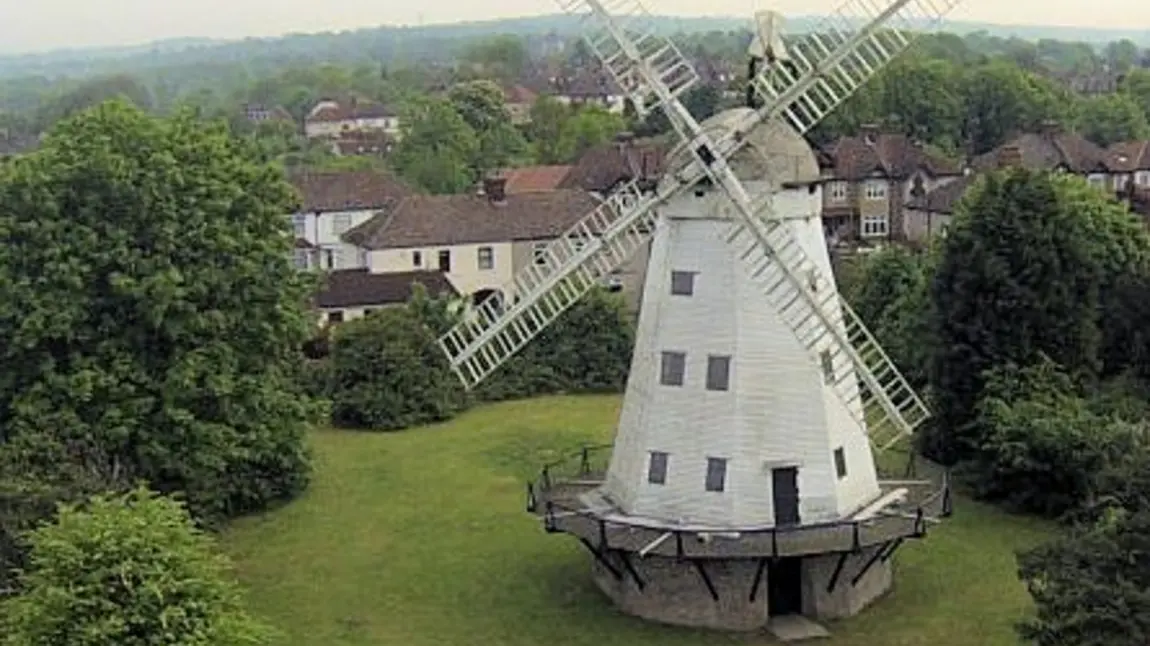Upminster Windmill to be saved

The Upminster Windmill was built in 1803 and remained in use as a family-owned business grinding corn until the 1930s. The Grade II* listed mill is one of only six surviving with sails in Greater London, and is one of the most complete examples of a smock mill remaining in the country. The name refers to the sloping sides of the structure that give the building the appearance of a countryman’s smock.
The building is currently on English Heritage’s Heritage At Risk register and the HLF grant will enable Havering Council, which owns the site, working with Upminster Windmill Preservation Trust to restore the mill and bring the milling machinery back to full working order.
Although situated in the midst of a built-up area the five-storey octagonal mill still sits within a one hectare open field setting. Archaeological research has identified the location of 14 ancillary buildings that were associated with the mill during its more than 130 years of active life. As such, it gives a clear indication of the area’s industrial heritage during the Georgian and Victorian eras.
The restoration project will also create an education and training centre in a separate building that will allow public access for the first time to a wide range of historical documents. The centre will be able to host school visits, public workshops and training sessions in traditional skills associated with milling. CCTV installed in the mill will permit visitors who cannot access the upper floors of the structure to view the restored machinery in action.
Volunteer researchers will record residents’ memories about local history and the project will create two apprenticeships in tourism and visitor attraction skills. Landscaping work will also be carried out around the mill.
At present the mill is only able to open at limited times for guided tours about 30 days a year. Once the work is complete and the education and training centre is open visitor days are expect to increase fourfold.
Sue Bowers, Head of Heritage Lottery Fund London, said: “This is a rare surviving example of a building that was at the heart of a local community from the early 1800s, a site of local industry providing employment and helping to feed the village of which it was a part. This project will create a working example from this bygone era while creating present day job and volunteering opportunities.”
Councillor Melvin Wallace, Cabinet Member for Culture and Community Engagement, said: “Upminster Windmill is one of the most significant heritage sites in the borough, and this funding will go a long way, not only towards restoring it to its former glory, but also making it into an invaluable educational hub. Thanks to the HLF, Upminster Windmill Preservation Trust, the Veolia North Thames Trust and the Architectural Heritage Fund, the mill will remain the jewel in the crown of Upminster for many years to come.”
Dennis Coombs, Chairman of Upminster Windmill Preservation Trust, said: “We’re really grateful to the HLF for making this award. Volunteers have been opening the mill to the public for almost half-a-century now, during which the fabric of the Mill has continued to decay. This will now be reversed and we will see the mill working again. I’m also extremely thankful to the team of volunteers, whose dedication and skills have made the restoration project possible.”
Notes to editors
Upminster Windmill was built by local farmer James Nokes in 1803 and remained in use as a family business until 1934. The estate built up around the mill included granaries for storing large quantities of corn, a bakery, stables, outbuildings, a miller’s residence and two workers’ cottages. The capacity of the mill was regularly increased by the addition of extra pairs of millstones. By the mid-1850s there were six pairs of mill stones, some driven by wind power, the rest by a steam engine
When the mill changed hands in 1849, the mill estate was described as being “eligibly situated on a pleasing eminence on the High Road at Upminster, comprising a most substantial modern built Corn Mill, capable of dealing with very extensive business”.
Locally the mill was known as Abraham’s Mill after Thomas Abraham, who was originally the foreman to the Nokes family and subsequently one of the mill’s owner.
In 1889 the mill was struck by lighting and in 1900 during a violent storm the windshaft snapped causing the sails to crash to the ground.
The other five windmills with sails in Greater London are Barnet Gate Mill in Barnet and Keston Windmill in Bromley; and three publicly accessible mills that have been restored with HLF funding: Shirley Windmill, Croydon (£218,100 in 1996); Wimbledon Common Windmill in Merton (£88,500 in 1998); and Ashby’s Mill in Lambeth (£397,000 in 2011).
Further information
HLF press office: Vicky Wilford on 020 7591 6046 / 07973 401 937, email: vickyw@hlf.org.uk or Phil Cooper on 07889 949 173.
London Borough of Havering press office: Sunita Patel on 01708 434 771 / 07932 036 574.